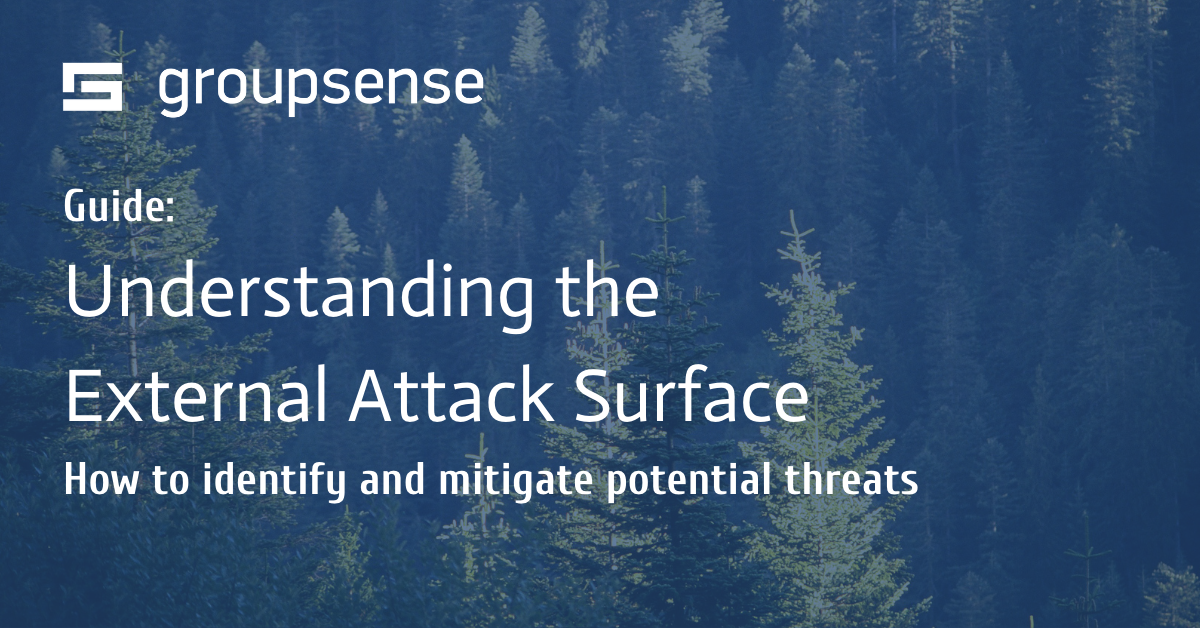In today's world, the importance of intelligence cannot be overstated. The ability to gather and analyze information, and to use that information to make informed decisions, is critical in both private and public sectors. In government, intelligence is a key component of national security, and its value extends to all other areas of society. In this comprehensive guide, we will explore the intelligence cycle - its importance, phases, key components, and the critical role it plays in supporting decision-making, crisis management, and achieving national security objectives.
The Importance of the Intelligence Cycle
The intelligence cycle is a critical process that enables organizations to effectively gather, analyze, and disseminate information. Properly executed, the cycle can help support decision-making processes, identify new opportunities, and mitigate risks. At its core, the intelligence cycle encompasses five key phases: planning and direction, collection, processing and exploitation, analysis and production, and dissemination and integration. Understanding each step in the process is critical to achieving success in any intelligence effort.
Enhancing Decision-Making Processes
Decision-making processes can be complex, and the right information is often difficult to obtain. The intelligence cycle helps organizations to make informed decisions with greater confidence. By collecting and analyzing information from numerous sources, intelligence analysts can provide valuable insights that help support the decision-making process. This, in turn, helps organizations to make better decisions, avoid costs, and take advantage of opportunities.
For example, a company may use the intelligence cycle to gather information about its competitors, including their marketing strategies, financials, and customer feedback. By analyzing this information, the company can make informed decisions about its own marketing strategies, product development, and pricing. This can ultimately lead to increased market share and profitability.
Supporting National Security Objectives
The intelligence cycle is an essential component of national security. Government agencies rely on intelligence to ensure that they are fully informed about the threats that they face. The cycle enables agencies to identify potential threats, collect necessary intelligence, and respond to events as they unfold. This rapid response is key to ensuring that national security objectives are met and the public is kept safe.
For example, intelligence agencies may use the intelligence cycle to gather information about terrorist groups, including their plans, capabilities, and potential targets. This information can then be used to prevent attacks, disrupt terrorist networks, and protect the public.
Facilitating Crisis Management
The intelligence cycle plays a critical role in crisis management. In times of crisis such as natural disasters, terrorist attacks, or pandemics, intelligence sources provide organizations with real-time information that informs decision-making. Effective crisis management requires timely, accurate, and relevant information – without which decisions cannot be made confidently.
For example, during a natural disaster, emergency response teams may use the intelligence cycle to gather information about the extent of the damage, the number of people affected, and the resources needed to respond. This information can then be used to allocate resources, coordinate response efforts, and provide assistance to those in need.
In conclusion, the intelligence cycle is a critical tool for organizations of all kinds. By enabling effective decision-making, supporting national security objectives, and facilitating crisis management, the intelligence cycle plays a vital role in keeping people and organizations safe and secure.
The Five Phases of the Intelligence Cycle
The intelligence cycle is a complex process that involves five key phases, each of which is critical to the success of the overall intelligence effort. These phases are planning and direction, collection, processing and exploitation, analysis and production, and dissemination and integration. In this article, we will explore each of these phases in greater detail.
Planning and Direction
The planning and direction phase marks the beginning of the intelligence cycle. During this phase, intelligence requirements are established, goals and objectives are set, and resources are allocated. It is during this phase that a comprehensive understanding of the problem at hand is developed. This includes the collection of data from various sources, such as human intelligence, open-source intelligence, and signals intelligence.
Additionally, during this phase, the intelligence team must also identify potential risks and threats that may impact the success of the intelligence effort. This requires a deep understanding of the geopolitical landscape, as well as an understanding of the capabilities and intentions of potential adversaries.
Collection
The collection phase is where data is gathered from a variety of sources. Collection methods may vary depending on the nature of the intelligence requirement. For example, open-source intelligence may be gathered through publicly available sources such as social media, news reports, and speeches. Conversely, signals intelligence may require the use of sophisticated equipment to intercept and analyze digital transmissions.
During this phase, the intelligence team must also ensure that the data being collected is accurate and reliable. This requires careful vetting of sources, as well as the use of advanced analytical tools to verify the veracity of the data.
Processing and Exploitation
During the processing and exploitation phase, collected data is processed and analyzed. This may involve translating information, decoding messages, or filtering irrelevant data. Once data is processed, it is ready for analysis, which is the next step in the intelligence cycle.
Additionally, during this phase, the intelligence team must also ensure that the data is protected from unauthorized access or disclosure. This requires the use of advanced encryption and security protocols, as well as ongoing monitoring and auditing of the system.
Analysis and Production
The analysis and production phase is where the processed data is analyzed and transformed into meaningful intelligence. During this phase, analysts evaluate information from multiple sources, examine patterns and trends, and provide insight into what the data means in relation to the intelligence requirement. This is the phase where the expertise of the intelligence analyst is most critical, as they must be able to identify key insights from multiple data sources.
Additionally, during this phase, the intelligence team must also ensure that the intelligence being produced is actionable and relevant. This requires ongoing collaboration with stakeholders to ensure that the intelligence is meeting their needs and informing their decision-making processes.
Dissemination and Integration
The final phase of the intelligence cycle is dissemination and integration. In this phase, intelligence is delivered to the stakeholders who need it. This might include decision-makers, policymakers, or operational personnel who need the information to inform their work. Dissemination may occur through reports, briefings, or other communication methods. Integration involves incorporating intelligence into operational plans or decision-making processes.
During this phase, the intelligence team must also ensure that the intelligence is being disseminated in a secure and controlled manner. This requires the use of advanced security protocols, as well as ongoing monitoring and auditing of the system.
The intelligence cycle is a complex and multifaceted process that requires significant expertise and resources. By following the five phases of the intelligence cycle, intelligence teams can ensure that they are collecting, processing, analyzing, and disseminating intelligence in a way that is effective, efficient, and actionable. Whether working in the public or private sector, intelligence professionals must remain vigilant and adaptable in the face of evolving threats and challenges.
Key Components of the Intelligence Cycle
There are several key components of the intelligence cycle, which are essential in ensuring an effective and efficient process. The key components of the intelligence cycle include intelligence requirements, intelligence sources and methods, intelligence analysts, and intelligence consumers and stakeholders.
Intelligence Requirements
Intelligence requirements are the foundation of the intelligence cycle. These requirements are the questions or problems that need to be answered or solved through intelligence. Properly identifying intelligence requirements is essential for the success of the intelligence cycle.
For example, intelligence requirements may include identifying potential security threats, assessing the capabilities of foreign governments, or understanding the motivations of terrorist groups. These requirements are often developed in collaboration with stakeholders to ensure that the intelligence produced meets their needs.
Intelligence Sources and Methods
Intelligence sources and methods refer to the sources of information and the methods used to gather that information. Sources may be human, open-source, or technical. Methods may include direct observation, interviewing, or digital interception.
It is important to consider the reliability and validity of the sources and methods used in intelligence gathering. For example, human sources may be more reliable but also more difficult to access, while open-source information may be more readily available but less reliable.
Additionally, the methods used to gather information must be ethical and legal. Intelligence agencies must follow strict guidelines and regulations to ensure that they are not violating the privacy or rights of individuals.
Intelligence Analysts and Their Role
Intelligence analysts are essential to the success of the intelligence cycle. They must have the expertise to evaluate multiple data sources, identify patterns and trends, and provide meaningful insight into the intelligence requirement. Analysts may come from a variety of fields, including law enforcement, military, or academia.
Analysts play a critical role in synthesizing and interpreting information to produce actionable intelligence. They may use a variety of analytical techniques, including data mining, predictive modeling, and network analysis, to identify key insights and trends.
It is important for analysts to remain objective and unbiased in their analysis. They must also be able to communicate their findings clearly and effectively to stakeholders who may not have a background in intelligence analysis.
Intelligence Consumers and Stakeholders
Intelligence consumers and stakeholders are those who receive and utilize intelligence. These may include decision-makers, policymakers, or operational personnel who use intelligence to inform their work. Understanding the needs of these stakeholders is essential in effective intelligence delivery.
Intelligence must be tailored to meet the specific needs of each stakeholder. For example, policymakers may require intelligence that is focused on long-term trends and strategic issues, while operational personnel may require more tactical and real-time intelligence.
It is also important for intelligence agencies to establish strong relationships with their stakeholders to ensure that they are providing relevant and timely intelligence. This may involve regular meetings, briefings, or other forms of communication to ensure that stakeholders are informed and up-to-date on the latest intelligence.
Conclusion
The intelligence cycle is a critical component of any effective intelligence effort. This process enables organizations to gather, analyze, and disseminate information in a way that supports decision-making, mitigates risks, and achieves national security interests. Understanding the five phases of the intelligence cycle, as well as the key components of the process, is essential to success in any intelligence effort.






